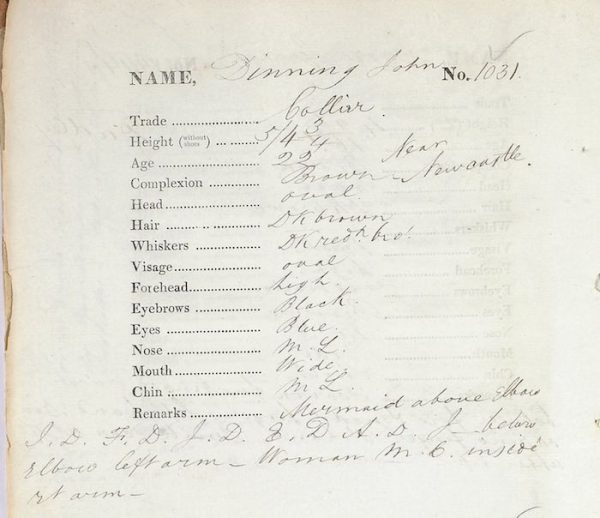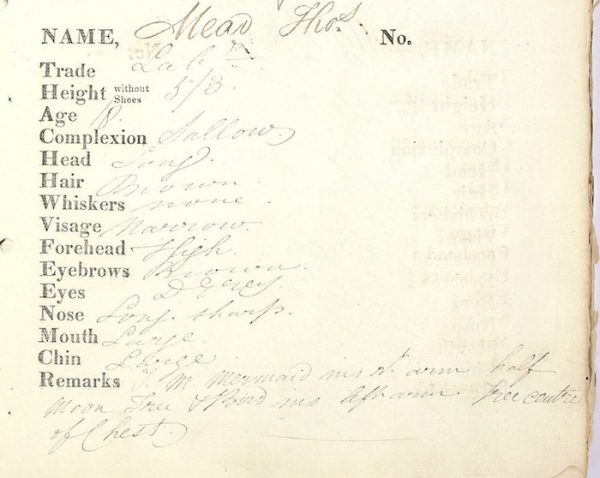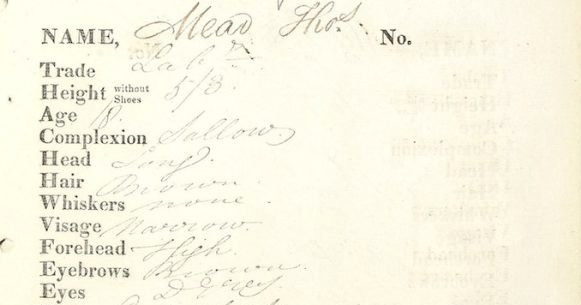Written by RAHS Volunteer and Copywriter, Christina King
This blog post is part of a series entitled ‘The Convict Experience: Love, Life and Liberty Beyond the Chains’. Each month we will explore a different – and often rather unusual – type of primary evidence historians can use to hear convict voices telling their own stories.
Revisionist history has done a significant job redefining convict history as more than simply an account of troublesome prisoners shipped to a foreign land. Primary sources in the form of official colonial communications and records, as well as letters and journal entries, have assisted in this redefinition. But much of this evidence was written by those overseeing the colony.
What records did the convicts themselves leave behind? Literacy levels amongst transported prisoners were not as low as often assumed—many were actually quite educated and, as a result, considered even more dangerous by colonial authorities than those who were illiterate [1]. But, while written records would be helpful, many convicts left none. So what can we use to better understand the convict experience of transportation? Does evidence exist for us hear about their individual hopes for a future, their links to the past, their hearts missing another, and their passive—but dogged—defiance of authority?
Convict tattoos and markings go some way to providing a whisper of these.
A nineteenth century phrenological view of tattooing suggested that only soldiers, criminals and prostitutes bore such markings and reflected a tendency amongst these groups to revert to a more primitive nature, a phenomenon known as ‘atavism’[2]. Simon Barnard challenges this archaic and unfounded theory by describing convict tattooing, not as a result of a predisposed criminal tendency but rather as ‘a response to dehumanisation’[3].

Figure 1 – John Dinning’s entry from the Indents for male convicts on the Norfolk 28 Aug 1835, Neptune 18 Jan 1838, Proteus 3 Aug 1831. [Image courtesy: Tasmanian Archives and Heritage Office, CON 18/1/18]
Although a primary numerical record of the incidence of convict tattooing does not exist, we do know that, upon arrival in Australia, at least thirty-seven percent of males and fifteen percent of female convicts sported a tattoo [4]. And, in fact, historians have remarkably detailed examples of varied designs tattooed on to the bodies of convicts, both male and female. This detail is thanks to the colonial indents which became increasingly comprehensive as the 1820s progressed [5]. In the absence of photography, colonial clerks crafted highly detailed physical descriptions of each convict upon their arrival. In fact, tattoos made these clerks’ jobs easier as they provided a unique characteristic which would set the prisoner apart in the indent’s description [6].
The designs and combinations of tattoos often served to tell a story unique to the bearer as well. Hope was often embodied by an image of an anchor, while salvation was symbolised by a crucifix [7]. Stars in various numbers and patterns could also represent particular hopes or affiliations. Common also were initials and mermaids, such as those mentioned in Figure 1.
The chest was a common place for tattoos to be put; the space over the heart was often marked by designs or words associated with affection or by those holding particular significance for their wearer. For example, the record in Figure 2 mentions that convict Thomas Mead’s chest bore the word “free”.

Figure 2 – Thomas Mead’s entry from the Indents for male convicts on the Strathfieldsay 15 Nov 1831, Surrey 14 Dec 1829, Sir Charles Forbes 27 Jul 1830, Susan 22 Nov 1837. [Image courtesy: Tasmanian Archives and Heritage Office, item number CON 18/1/19]
It is difficult to determine the intended meaning behind many tattoos, since they were recorded empirically in the convict indents, without any description of their context. As a result, a degree of guesswork is required in using them to better understand the convict experience on an individual level.
But, in a world of colonial authority and uniformity, tattoos probably provided a small means for convicts to assert their individuality [8]. And they often served as a link to the past. Many modern accounts of individual convict lives portray a solitary person with a fervent desire to remain in the new colony, making a contribution and building a new life for themselves away from the poverty of England and Ireland.
However, it would be inaccurate to assume all convicts wanted to remain after their sentences ended and to forget the links to their past. We know some did return home. Some couldn’t even wait that long, attempting to escape before achieving freedom; for instance, the Sydney Gazette for 21 October 1824 lists at least 100 prisoners who had absented themselves, some bearing ‘false certificates’ [9].This evidence fits with a study of convict tattoos since the latter demonstrate an ardent desire amongst many convicts to remember. To remember family and friends, to recall lovers and experiences, wins and losses. And, ultimately, to maintain their own identity and to remember who they were themselves, beyond their chains.
References:
[1] Stephen Nicholas, Peter R. Shergold “A Labour Aristocracy in Chains” in Steve Nicholas, ed; Studies in Australian History: Convict Workers: Reinterpreting Australia’s Past (Cambridge: Cambridge University Press, 1989), pp 98-108
[2] Cesare Lombroso, Criminal Man. Translated by Mary Gibson and Nicole Hahn Rafter. (Durham and London (Duke University Press, 2006) p.61.
[3] Simon Barnard, Convict Tattoos; Marked Men and Women of Australia, (Melbourne: The Text Publishing Company, 2016) p.12.
[4] Ibid p.12.
[5] Deborah Oxley, Convict Indents (Ship and Arrival Registers) 1788-1868, https://www.digitalpanopticon.org/Convict_Indents_(Ship_and_Arrival_Registers)_1788-1868, accessed 25 April 2019
[6] Barnard. Convict Tattoos, p.4.
[7] Ibid. p.20.
[8] Ibid. p.6.


0 Comments